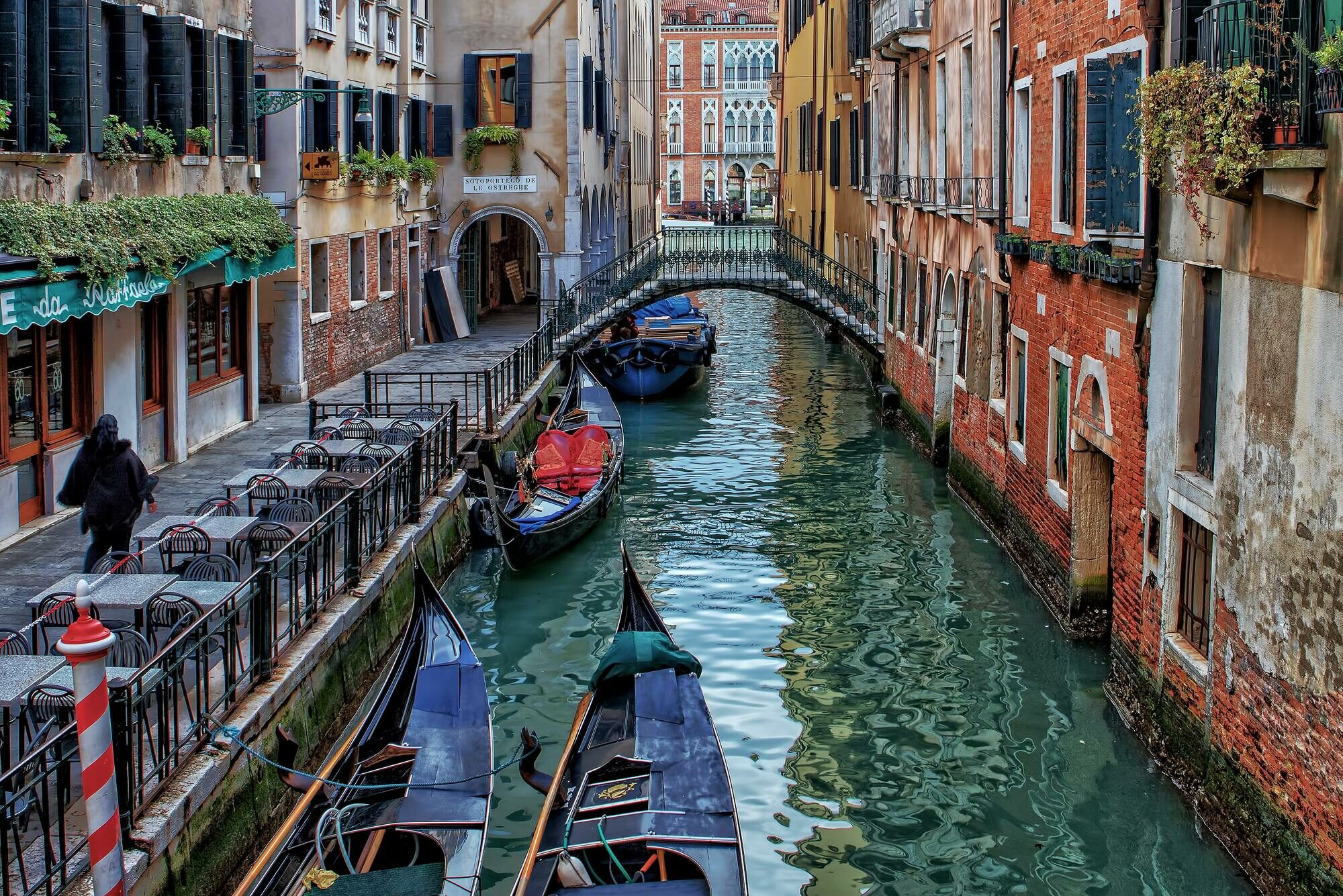It takes some forethought to eat healthy here. Many eateries in Venice are content to serve mediocre food to the passing tourists. For foodies looking for restaurants where serious chefs use high-quality local products, we have pulled together our top 10 restaurants off the tourist track.
As you would expect from city surrounded by water, there is a strong emphasis on seafood. However meat eaters will be satisfied as well. Prices are greater in Venice than elsewhere in Italy, but that’s to be expected.
Many Venetians rarely eat in restaurants, preferring to graze at traditional pubs (bacari) with cicheti (tapas snacks) piled high on counters. With a glass of wine and a platter of these, you may have a far cheaper meal. This will leave you with more money for those few great, unforgettable nights.
All’Arco
All’Arco is the archetypal Venetian bacaro, more of a crazy-bustling hole-in-the-wall with mouth-watering cicchetti (bar snacks) (traditional wine bar). There are sandwiches and crostini piled high with creamed cod; anchovies and onions, salami, and veggies, to name a few. You’ll be talked through everything at breakneck speed before being sent on your way with enough food to either tide you over or fill you up.
GLAM
Chef Enrico Bartolini holds six Michelin stars among his five restaurants as of 2019, with one at GLAM; his Venice outlet (and currently the hottest dining ticket in the city). Donato Ascani, the resident chef, is carrying on Bartolini’s contemporary culinary concept. The à la carte menu changes seasonally, but the tasting meals (starting at €120) are more intriguing. The dishes are beautifully balanced, with content rather than just a spectacular display.
Il Ridotto
Il Ridotto is located just east of St Mark’s on a bustling tourist square. The restaurant’s tiny, brick-clad grounds exude a serene elegance. Tasting menus (of five, seven, or nine dishes) are the way to go here; with chef and owner Gianni Bonaccorsi’s seafood and meaty concoctions. The delicately prepared dishes fluctuate with the seasons, but can include risotto with yellow tomatoes and burrata. Try the pig cheek and belly with chamomile-flavored creamed potato and green apple.
Osteria Alle Testiere
The Daily menu relies on availability of fresh fish in the market, according to Alle Testerie’s website. Don’t expect to eat the same delicious item you had the last time you went to this stylish, small seafood restaurant nestled away on a Castello backstreet. But go with the expectation that everything will be freshly fished. The daily seafood meals from chef and co-founder Bruno Gavagnin are deceptively basic but always superb. There’s a lot of Venetian heritage here, but you can also expect some unusual spices or other surprises. The sweets are wonderful.
La Zucca
Vegetarians travel to La Zucca, a well-loved, something-for-everyone kind of local favorite, to get away from Venice’s glut of fish, but the restaurant offers much more. The food is straightforward: terrific, honest cooking and a daily-changing menu, indicating that everything served was purchased that day. The savory pumpkin flan is renowned, the pasta meals are delicious (try the tagliatelle with artichokes and pecorino if it’s available), and the sweets are all unforgettable.
Local
The amount of open space at the contemporary, pared-back Local is surprising in a sea of intimate (read: tiny) restaurants. The Head Chef Matteo Tagliapietra left Burano for several years to go and work in gastronomic temples such as Nobu and Noma,. Though his feet are firmly rooted in the lagoon city, he brought home Far Eastern characteristics that are unique in Venice. Each of his ever-changing dishes is a visual delight. This is a restaurant for sophisticated foodies.
Locanda Cipriani
The Locanda Cipriani is a charming slice of Merchant Ivory-tinted Venice, with a leafy old-fashioned garden on the lovely little lagoon island of Torcello, old-fashioned service, and old-fashioned food that borders on hotel fare. You’ve come for the setting and the Grand Tour atmosphere, after all. Many major names have walked through the Cipriani’s country-inn-style doors, from Ernest Hemingway and generations of British royals to mid-century A-list stars and presidents.
Osteria Alla Frasca
La Frasca, based close to Fondamenta Nuova has been serving traditional Venetian cuisine since 1903. Traditional it may be, but it’s all about the fresh seafood presented in style. The baccalà mantecato is a must have dish – creamed cod dish served with crispy polenta and cuttlefish cooked in its own ink.
Osteria La Perla ai Bisatei
La Perla ai Bisatei, an old-style spit-and-sawdust eatery in Murano’s backstreets, is a nice surprise in a city where restaurants can easily fall into one of two categories: modern pretentious or tourist trap. It’s noisy—locals’ voices battle with waiters screaming the unwritten daily menu—and the food (available exclusively for lunch) is substantial rather than polished. Outsiders, on the other hand, are greeted with the same gruff-but-friendly welcome as locals. The fava bean and onion salad, as well as the mussels and clams pasta, are worth trying.

